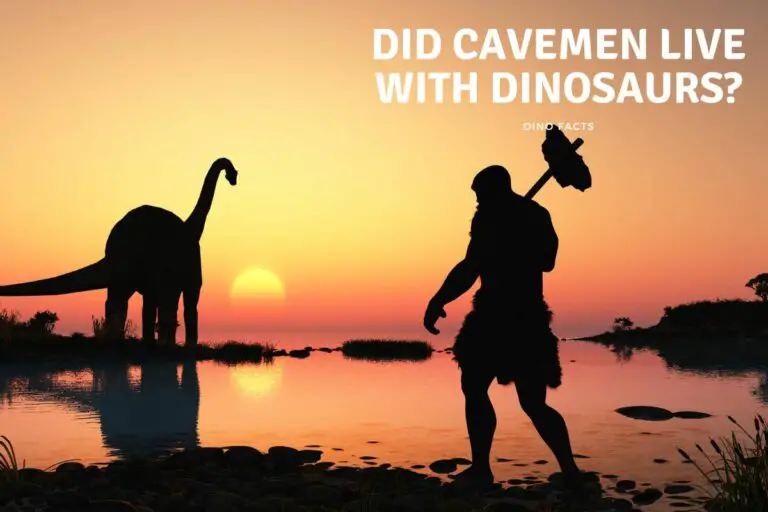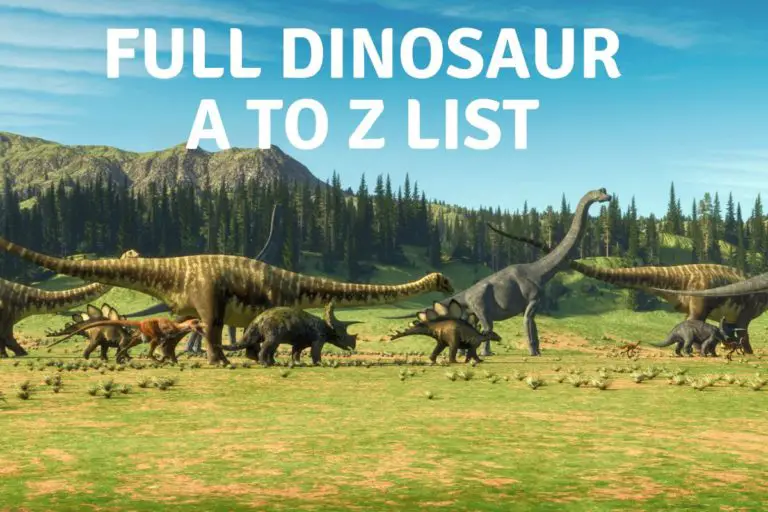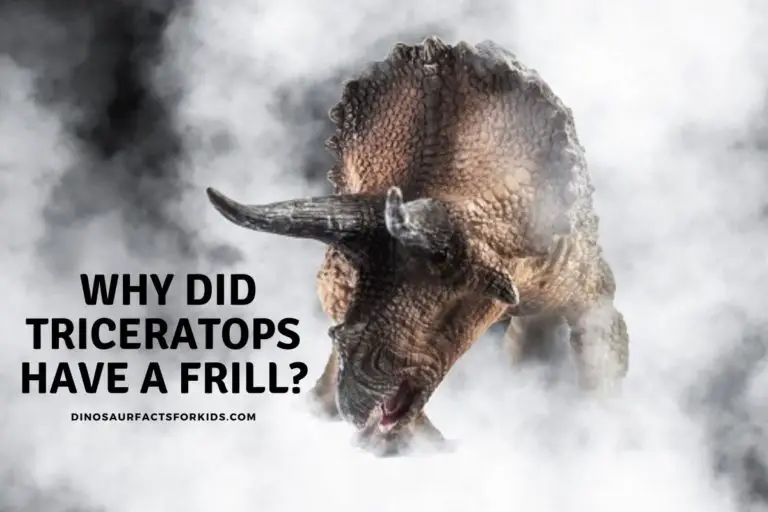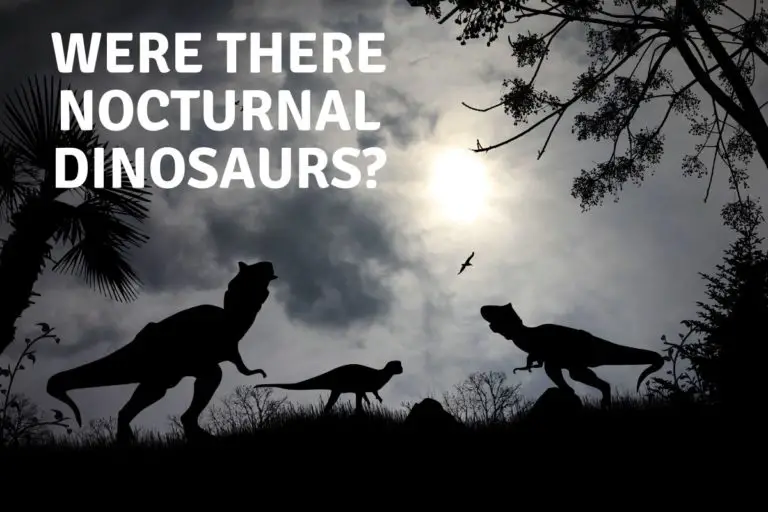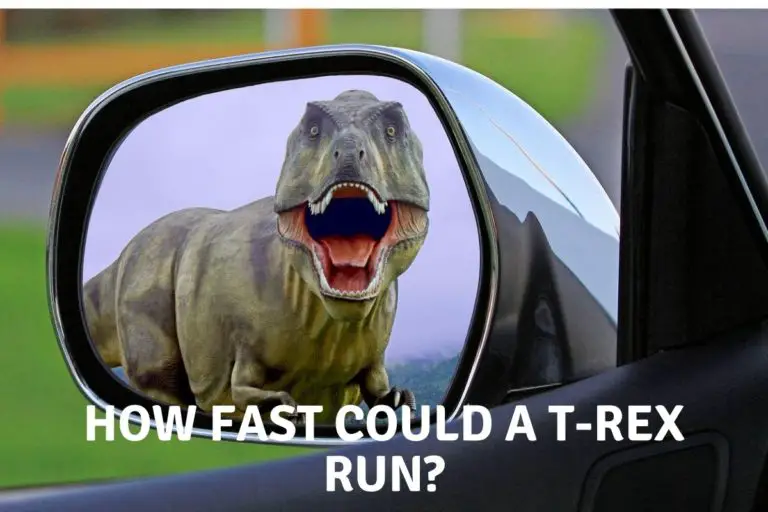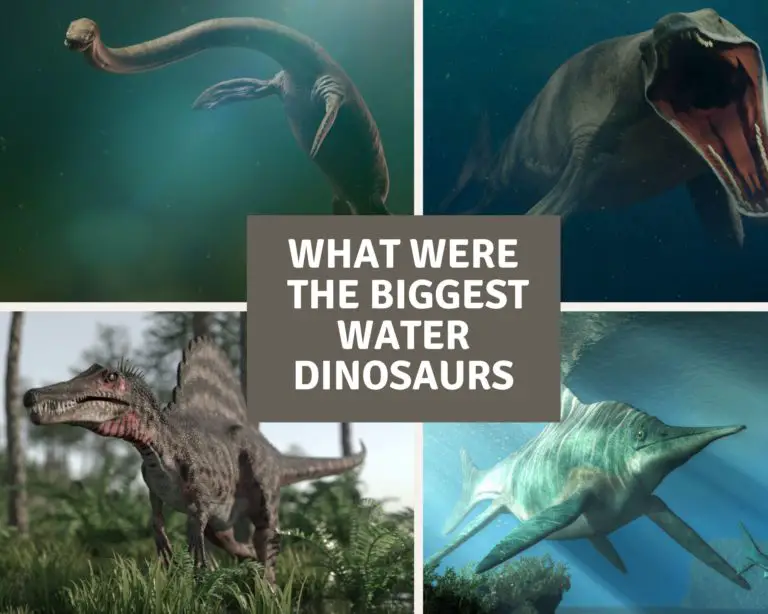Are Dinosaurs Real
At some point this question will arise either in homes or classrooms, Were Dinosaurs real?. While the answer is yes, the reasons can be difficult to explain, especially to people with little to no scientific background. in this article we will try to give advice and tips to help explain how we can prove dinosaurs are indeed real.
Dinosaurs are scientifically provable to have existed between 66 and 240 million years ago through fossil records of bones discovered in rocks of the same age. There are not the only ancient creatures proved to have lived using these methods. Fossils of life over 450 million years old has also been discovered.
This article will discuss the commonly accepted details about dinosaurs, including the size of their bodies and diet. You can use this information to make your own conclusions on whether dinosaurs lived or not.
(they were 😉 )
Commonly accepted details about dinosaurs
Many of the common details about dinosaurs are based on fossil and non-fossil records. These records include bones and skeletons, feces, trackways, gastroliths, feathers, and impressions of internal organs and a great deal of assumption.
- Earth sciences contribute to our knowledge about dinosaurs. Throughout the years, there have been numerous changes in the details about dinosaurs. However, there are several generally accepted details that were present in prehistoric times.
- In general, dinosaurs ranged in size, shape, and behavior. Some species were tiny, feathered insects, while others were enormous and weighed 70 tons. Dinosaurs ranged in size, shape, and weight, from tiny, insect-hunting animals to enormous predators that dominated the skies.
- Their behavior was varied, too: some were terrestrial, and some were a mix of both. Many were bipedal, although some were quadrupedal. And although they were all well adapted to their terrestrial habitat, they were incredibly varied.
- While the dinosaurs were enormous and fierce, their appearance in prehistoric cultures largely changed the way we think of dinosaurs. For millennia, dinosaur bones were often referred to as dragons, and the Chinese word for dinosaurs was kong long, which meant “terrible dragon.” These depictions matched fossil evidence for certain species of dinosaurs. For centuries, the popular view was that dinosaurs walked on four legs.
- The smallest dinosaur was bigger than two-thirds of today’s mammals. The majority of dinosaurs were larger than most modern birds and crocodiles.

How Do We Know Dinosaurs Are Real?
Paleontologists study fossils to identify dinosaurs. They search for feathers, skin imprints on bones, and other evidence of the animals’ existence. Listed below are some of the ways that scientists have confirmed dinosaurs’ existence.
Paleontologists examine fossils to find dinosaurs
The study of fossils can reveal useful information about an ancient species. For example, a fossilized tooth can give clues about the diet of the species it once inhabited. Such information can be invaluable in determining the family tree of a dinosaur. Paleontologists can also infer the lifestyle and habits of a dinosaur from its enclosing rocks and associated fossil remains. Phylogenetic trees can show the relationship of fossils to a dinosaur’s evolution, including their common traits.
When little fossil evidence is found, paleontologists will dig deeper to identify the species. Using microscopic features of bone structures, paleontologists can determine which dinosaurs they are studying. These small details can mean a lot to paleontologists, so collaborating with other paleontologists is essential. And when they do find a fossil, they will be able to share it with the rest of the world perhaps resulting in a new species being discovered.
The study of fossils by paleontologists is an important step in understanding the early history of life on Earth. Not all paleontologists study dinosaurs, but there are many other areas of expertise within this field.
Some specialize in studying plants or large animals, while others focus on smaller creatures such as birds and mammals. In addition to fossils, paleontologists can use computer models to understand the movements and appearance of ancient animals.
They look for feathers and other features
Scientists are using X-ray imaging to determine whether fossilized dinosaur feathers were crafted by birds or lizards. Dinosaurs had two kinds of feathers: protofeathers were dark, while more complex protofeathers were lighter.
Previously, researchers thought that some dinosaurs were fluffy. Now, new fossils show feathers, leading to speculation that all dinosaurs were in some way ancestors of feathered birds. Some meat-eating theropods, such as tyrannosaurs and velociraptors, were clearly feathered, and this discovery was further supported by new analysis of the fossils.
If fossils of dinosaurs have feathers, they show that these creatures evolved into birds and were not stand alone animals. , a theory that contradicts biblical history. This is particularly important because, if the fossils contain feathers, dinosaurs could have evolved into birds and become extinct in their more “well know scaly, form”
They compare fossils with other animals
Researchers study fossils to learn more about long-gone animals and plants. A fossilized sharp pointed tooth, for example, probably belongs to a carnivore, as these animals consumed meat. The fossils also show the similarity between the tooth and other carnivores, allowing scientists to make inferences. This helps us understand life on the Earth before humans.
To determine if dinosaurs were real, paleontologists examine evidence left by extinct animals. Fossils are the ancient remains of an organism, such as bones, teeth, footprints, tracks, and eggs.
While both approaches have their pros and cons, there are some major differences. While the populationist approach is dominant in the biological sciences today, the typological approach has been more appealing to researchers.
This method takes into account minor differences, allowing scientists to compare dinosaur fossils to other animals.
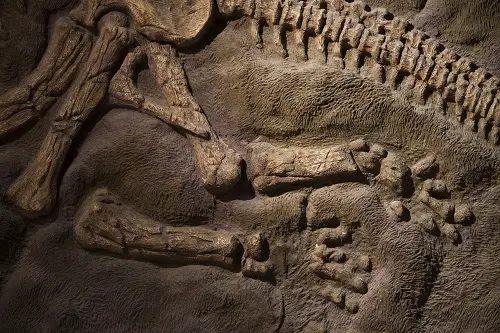
They look for Skin Imprints on Bones
The dinosaurs that we see today were a lot different in their day-to-day lives, but paleontologists have uncovered evidence that helped them understand the creatures that lived millions of years ago. Skin impressions on bones help paleontologists identify dinosaurs based on their appearance. They can tell from the patterns if the animal had scaly or feathered skin.
Trace fossils are a form of evidence that fossils left behind. They can help scientists determine which dinosaurs lived in an area, how many roamed the area, and how old they were. Scientists can also determine how old individuals were by looking for imprints on dinosaur bones. They can also tell whether the dinosaurs were living or dead depending on their appearance.
The outer parts of a long-dead creature don’t easily get preserved in a fossil record. However, a famous specimen of the horned abelisaurid (Carnotaurus) discovered in Patagonia in 1984 was the first meat-eating dinosaur to leave a skin imprint on a bone. The dinosaur’s coat was covered in thorns, studs, and bumps.
They look for ‘quill knobs’
When scientists examine fossils of birds, they often find ‘quill knobs’, the attachment points for secondary feathers. But, quill knobs are not found in every bird just like in they are not found in every dinosaur.
In 1998, researchers discovered a fossilized Velociraptor forearm in Mongolia. It has feather imprints, which was later confirmed by fossils of its close relatives. The ‘quill knobs’ were actually feather ligaments, which scientists believe was an early form of quills.
Why is this important, it shows a link between the modern world and the ancient world. it shows that in all probability the evidence of feathers, and quill knobs as discussed above that dinosaurs were impacted ( perhaps literally) by a global catastrophe that while not killing all dinosaurs instantly, it did cause the extinct of most, an the evolution and the adaptation of those that survived.
How Do We Know How Old Fossils Are?
There are a few different methods used to date fossils. There is radiometric dating, which uses certain elements that are radioactive to determine how old an object is. This method works by counting the amount of radioactive atoms within an object. The age of the object will depend on the number of these atoms. However, it is not 100% accurate. This is why experts use the other methods to date fossils.
Knowing the age of the rocks / fossils that are discovered within a few million years (and sometimes a few hundred thousand years) proves that these animals lived at that time as well. When these fossils are found in the numbers they have been today they present irrefutable proof that dinosaurs are real and did walk the earth 66 to 240 million years ago.
Radiometric dating
Radiometric dating has been used to date the Earth. It relies on the decay of radioactive isotopes, such as Uranium, to determine numerical dates. Trilobites are good index fossils because they evolved rapidly and moulted like arthropods. This helps scientists determine when certain rocks formed, and correlates them to other rock formations of similar ages. Nevertheless, the methods of radiometric dating have limitations.
In order to be accurate, radiometric dating requires certain assumptions. For example, the radioactive element carbon-14 decays with a half-life of 5,730 years. The decay of carbon-14 can also be calculated. The half-life of carbon-14 allows scientists to date fossils, organic materials, and wood. Moreover, the half-life of a given element is known, making the process of radiometric dating more accurate.
Another radiometric dating method is potassium-argon dating. This method uses the relative position of two radioactive elements – lead and uranium – in the ground. This technique is most reliable when determining the age of fossils that are buried on top of each other.
A high-quality specimen will have a higher age than one buried on top of another. The accuracy of this method depends on the type of fossils and the radiation levels in the sample.
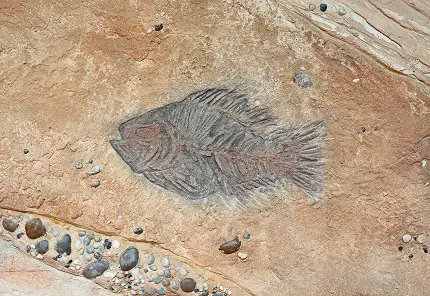
Relative dating
Scientists also use the relative dating method to determine the age of fossils. They correlate fossils found in different parts of the world and use these dates to calculate the age of a rock layer. The relative age helps scientists determine if the fossil is newer or older than other rock layers in the same strata.
Relative dating also uses magnetism in rocks to determine the age of a fossil site. The orientation of Earth’s magnetic field changes over time, so scientists can make accurate estimations of the fossil age.
To perform relative dating, scientists must match a rock to an index fossil. Index fossils, which are the earliest fossils that have remained the same age over a long period of time, are commonly found and can be identified.
Moreover, fossils that occur alongside an index fossil must be within its age range. These methods are very effective when there are more than one fossil of the same age in the same rock layer.
Relative dating of fossils is based on a theory known as the principle of faunal succession. This principle states that the same species in a particular area of the world occur at certain intervals of time.
By matching up these partial sequences, geologists can determine the relative age of fossils in the same region. This principle has been proven accurate over the last few decades. The result is a clearer picture of the age of the Earth, its rocks and of course helps prove the age of the fossils, dinosaur or otherwise, found in them.
Thermoluminescence dating
Thermoluminescence dating is a method of determining how long a material has been exposed to light and heated. It works by heating the material to a certain temperature, and the resulting light signal is proportional to the amount of radiation the object has absorbed. Thermoluminescence dating can be applied to pottery and ceramics, as well as sediments and fossils.
Another method of determining the age of fossils is called optically stimulated luminescence. This method has only been used since 1984, but is similar to thermoluminescence dating. It involves measuring the amount of light that is emitted by sediment grains exposed to light. The process can determine the age of an unheated sediment less than 500,000 years. The sample must be exposed to light to determine its age.
The method uses a mixture of potassium-40 and argon-40 to date ancient materials. The potassium-40 content in the sample depends on the age of the object. A sample that is sandwiched between two volcanic deposits may be too old to be dated using the technique. Using more than one method in combination gives more accurate results.
You may not be able to determine the exact age of a fossil with the use of potassium-argon dating.
Law of superposition
This law was developed by Danish geologist Nicolaus Steno. It tells you the age of a fossil based on its position relative to another one. For instance, if you find a trilobite fossil several inches beneath an unidentified fossil, you can use the law of superposition to estimate how old the fossil is.
The law of superposition tells us that rocks with different relative ages are always older at the bottom. The earliest rock layers are always on the bottom of a layered sequence. Later, younger rock layers are deposited on top of older layers.
As a result, fossils in the lower layers are the oldest record of life. So, using the law of superposition to determine how old fossils are is an effective way to understand the age of rock layers.
The earliest geologic time scales did not include the number of years ago. This is why the same rock layers are found on opposite sides of the Grand Canyon. However, sedimentary rocks are more useful than metamorphic or igneous rocks.
Because sedimentary rocks have different compositions and properties, we can use the principle of superposition to determine how old fossils are. When using this method, it is important to understand how the law works so that you can make accurate estimates.
Did Any Dinosaurs Survive the Cretaceous Period?
Did any dinosaurs survive the Cretaceous period? In fact, only a few did, because the K-Pg boundary separated the Paleogene and Cretaceous periods. The only long term survivors of the Cretaceous period were beaked birds and the Maniraptoran dinosaurs and of those living today we only see birds, from the dinosaur family.
The dinosaurs, at least the large ones went extinct 66 million years ago. However there was still plenty of life on earth after the asteroid and climate change that followed we briefly look at the suggested reasons they survived in same way below.
Table 1: Animals that survived in some form the Extinction event.
| Species Of Animal | Possible Traits that helped survival |
| Crocodilian | Aquatic, and food supply less affected |
| Turtles | Aquatic and food supply less affected |
| Insects | Hardy, and built for survival |
| Mammals | Smaller than dinosaurs, quicker moving than large dinosaurs |
| Snakes | Reptiles, cold blooded and need less food |
| Lizard | Reptiles, cold blooded and less food requirements. |
| Birds | Flight capable and able to move to better food sources quicker. |
All these species maintain population large enough to survive the extinction event and in the form of birds so did dinosaurs. As you can see from the table above each type of animal had a trait that dinosaurs did not possess or did not posses in enough strength to cope with the swift and massive climate change.
The climate change and loss of food and habitat that followed the asteroid would have made life increasingly difficult for large animals. At the time the only, known at least, large animals were the dinosaurs, and some pterosaurs or marine reptiles.
being so large they would have had to consume huge amounts of food, if those food supplies were not available be it plant life or meat, then they would die. Leaving only smaller dinosaurs able to survive and species better adapted to change like in the table.
There are several theories regarding the fate of these animals. A common theory is that dinosaurs suffered extinction from competition with mammals. In other words, they may have been driven to extinction by competition with a variety of mammals, including small mammals that also preyed on their eggs.
Being ground dwelling, even if a small dinosaur survived eggs would have been a target, and although there is not absolute knowledge of nurturing habits of dinosaurs it is thought they were not particularly attentive parents.

Evolution of birds
Although the similarities between modern and ancient birds are often striking, the fossil record provides ample evidence for a gradual transition between the two. During the Cretaceous period, ancient birds evolved into short-tailed birds, while their feathered legs amounted to rear wings. This fossil record provides an excellent basis for reconstructing the history of birds and dinosaurs. The evolution of birds and dinosaurs is an excellent model for combining data from fossils, living species, numerical analyses, and other sources. In addition, these two groups have achieved exceptional diversity through millions of years of evolution.
Several skeletal similarities exist between birds and dinosaurs. Both dinosaurs had hollow, pneumatized bones and gastroliths in their digestive systems. They also had similar nest-building and brooding behaviors ( possibly) .
To start, scientists have determined that birds are descendants of dinosaurs by using phylogenetic analysis, which is a process of constructing family trees based on similarities among organisms. The phylogenetic analysis was first used in the 1980s and confirmed that birds are related to dinosaurs. Since then, numerous fossil discoveries have supported the theory of dinosaur-bird relationship. Several species of dinosaurs, including those found in China, possessed feathers.
To further determine how close human evolution is to the origin of placental mammals, scientists studied the genomes of birds and turtles. The researchers compared the genomes of modern-day birds and turtles with dinosaurs’ to determine how close their ancestors were to us. The study showed that birds and turtles shared a common ancestor 260 million years ago, approximately 20 million years before the dinosaurs.
Conclusion
Sources
- https://www.amnh.org/dinosaurs/dinosaur-facts#:~:text=Dinosaurs%20are%20a%20group%20of,found%20on%20all%20seven%20continents.
- https://www.brandwatch.com/blog/react-are-dinosaurs-a-hoax/
- https://www.thecoldwire.com/were-dinosaurs-real/
- https://www.geolsoc.org.uk/Geoscientist/Archive/April-2018/Dinosaur-deniers
Hi, I am Roy Ford a General Studies and English Teacher who has taught all over the world. What started as a fossil collection became a great way to teach, motivate and inspire students of all ages and all over the world about dinosaurs and from that and children’s love of dinosaurs came the site dinosaur facts for kids, a resource for all ages.

